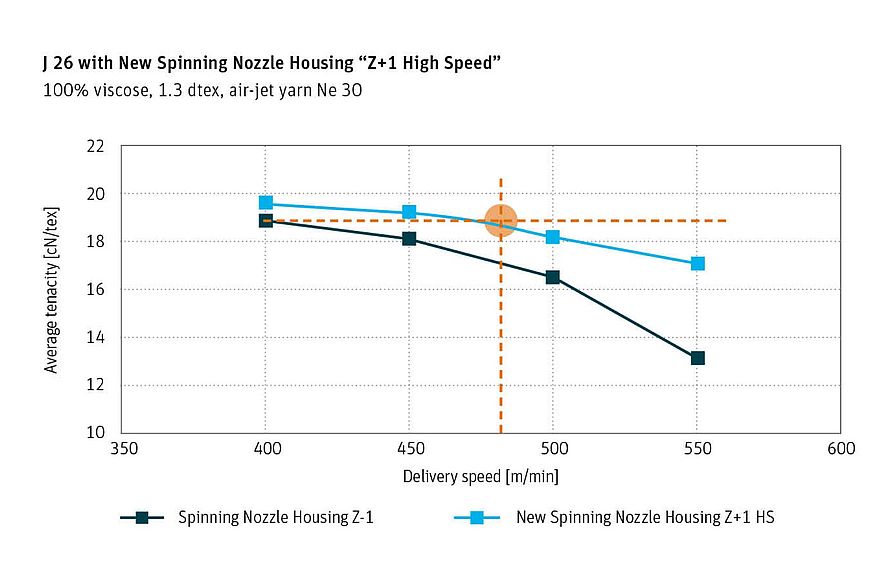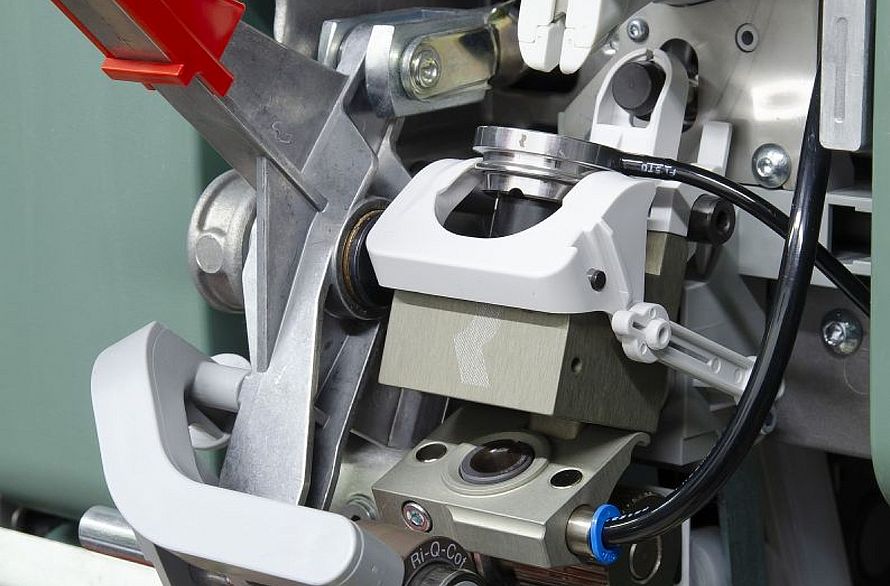Unique Solutions for Processing Viscose with Air-Jet Spinning
The consumption of cellulose fibers is growing and due to their attractive properties, they are appreciated by spinning mills, downstream processing, and end users. The air-jet spinning machine J 26 offers new solutions for processing viscose with high productivity and quality.
J 26 with new features
The air-jet spinning machine J 26 offers several unique features for processing viscose. The new spinning nozzle housing “Z+1 High Speed” with a reshaped fiber feeding element ensures high yarn tenacity and production speed at the same time. The delivery speed can be increased to 480m/min for 100% viscose Ne 30 without a loss in yarn quality. With 19 cN/tex, the yarn strength is the same as with the existing “Z-1” housing with a 17% lower delivery speed of 400 m/min (Fig. 1). This reduces the yarn conversion costs because the air pressure for twisting remains the same at a higher production speed. The J 26 is also well suited for processing blends with polyester: cotton with a proportion of up to 50% polyester and viscose with a proportion of up to 80% polyester.

Simplified handling and easy operation
In addition to increased productivity, the operation has been simplified thanks to the option of opening the housing of the spinning nozzle. This means the nozzle and the housing can be cleaned easily and effectively without having to remove the ceramic spinning tip (Fig. 2). This results in fewer red lights and a reduced workload for operators. Spinning mills report a 50% reduction in operating time per event and red lights that are active for only 5 to 11 seconds compared to 25 to 45 seconds with a closed spinning nozzle housing.

Best package quality for downstream processes
The J 26 offers pneumatic package damping for uniform package quality and efficient unwinding for downstream processes. Packages containing man-made fibers, especially viscose, tend to be very hard with even harder edges. This results in an unwinding that is unstable and brings about yarn breaks. To prevent the yarn from breaking, the density is kept consistent over the complete package build-up. The unique stroke respiration softens the edges ‒ which is the secret for best unwinding performance. The optimized winding enables a 20% higher package weight with man-made fibers at the same diameter. This results in higher machine efficiency thanks to 20% fewer doffings. Weaving and knitting machines also benefit from less handling and less stops.